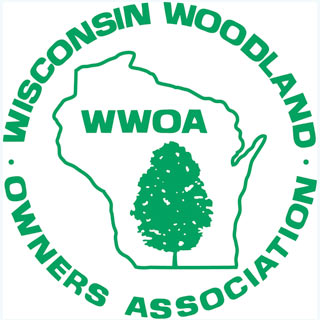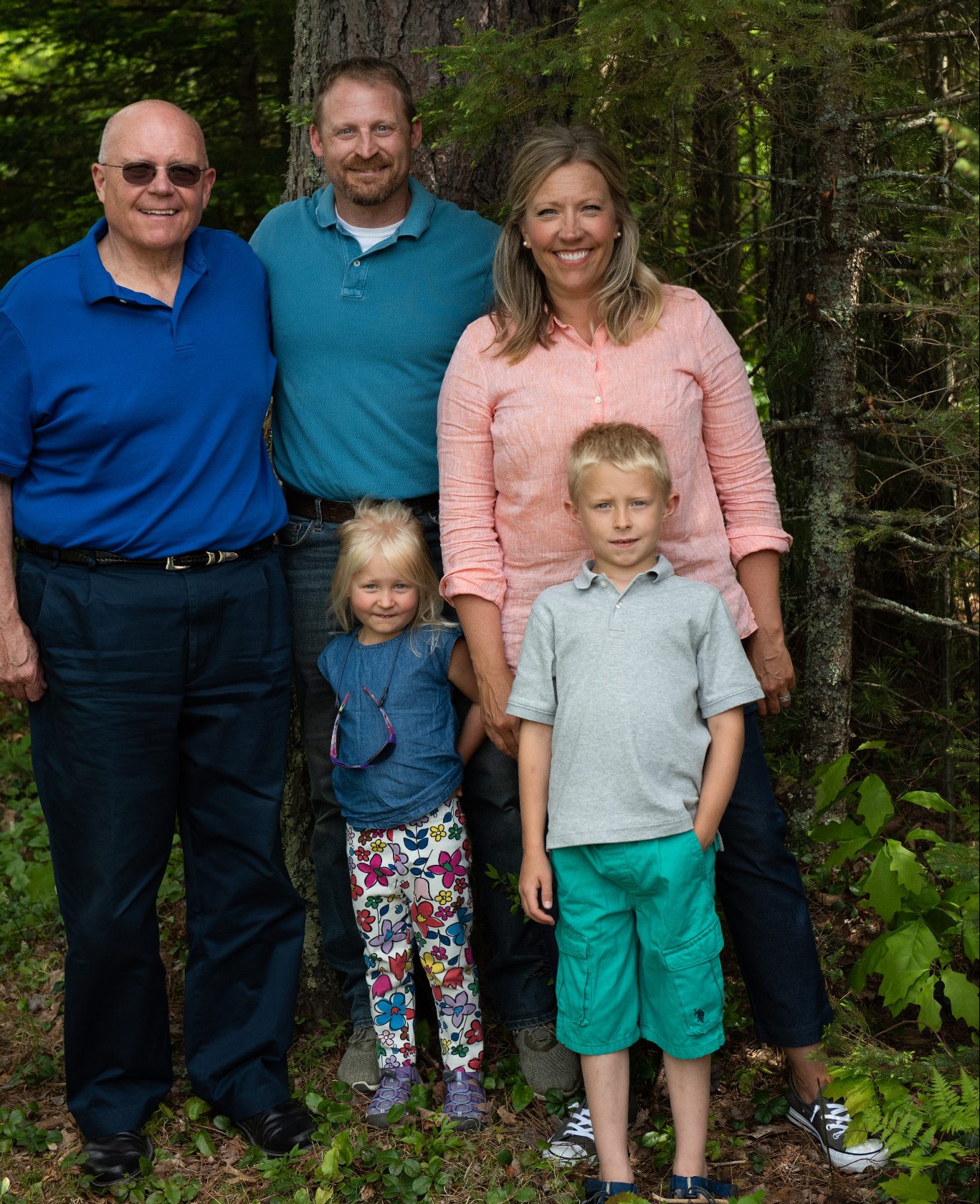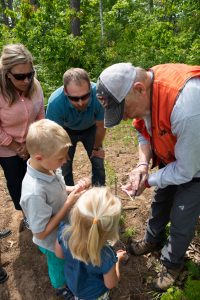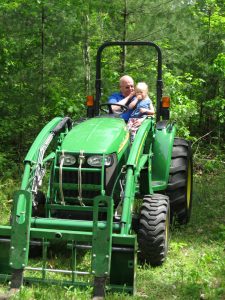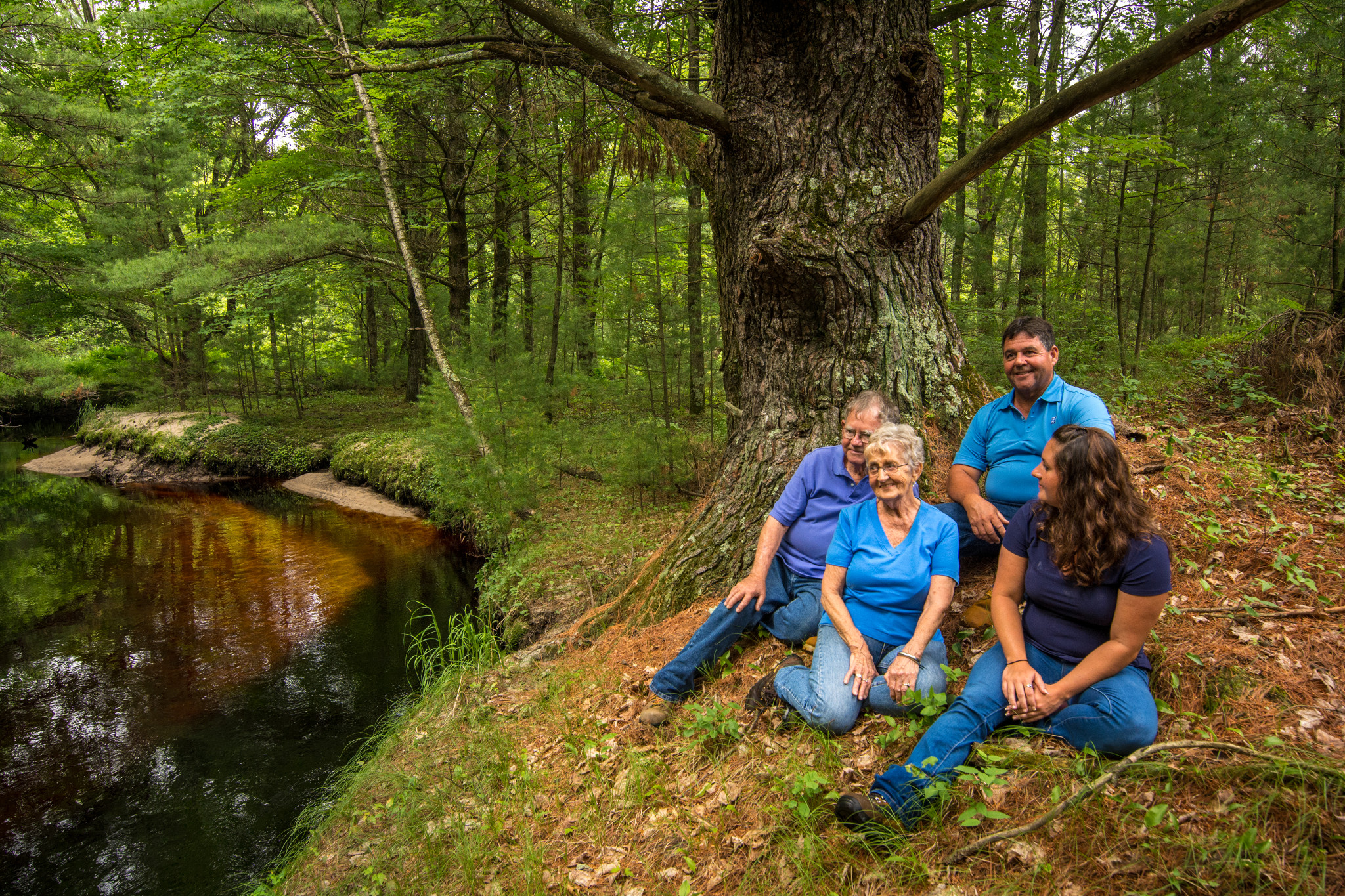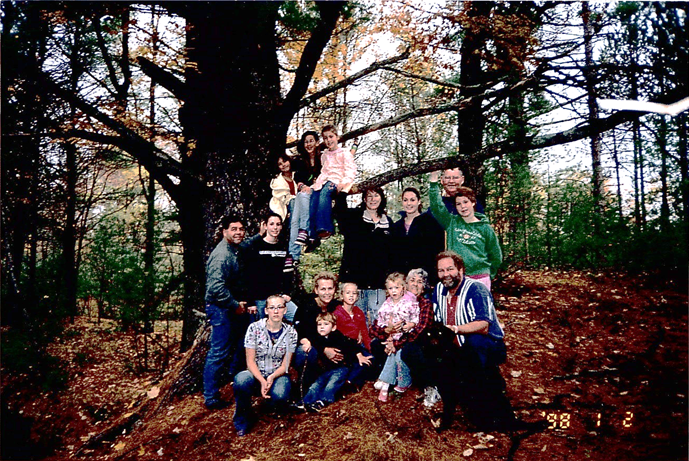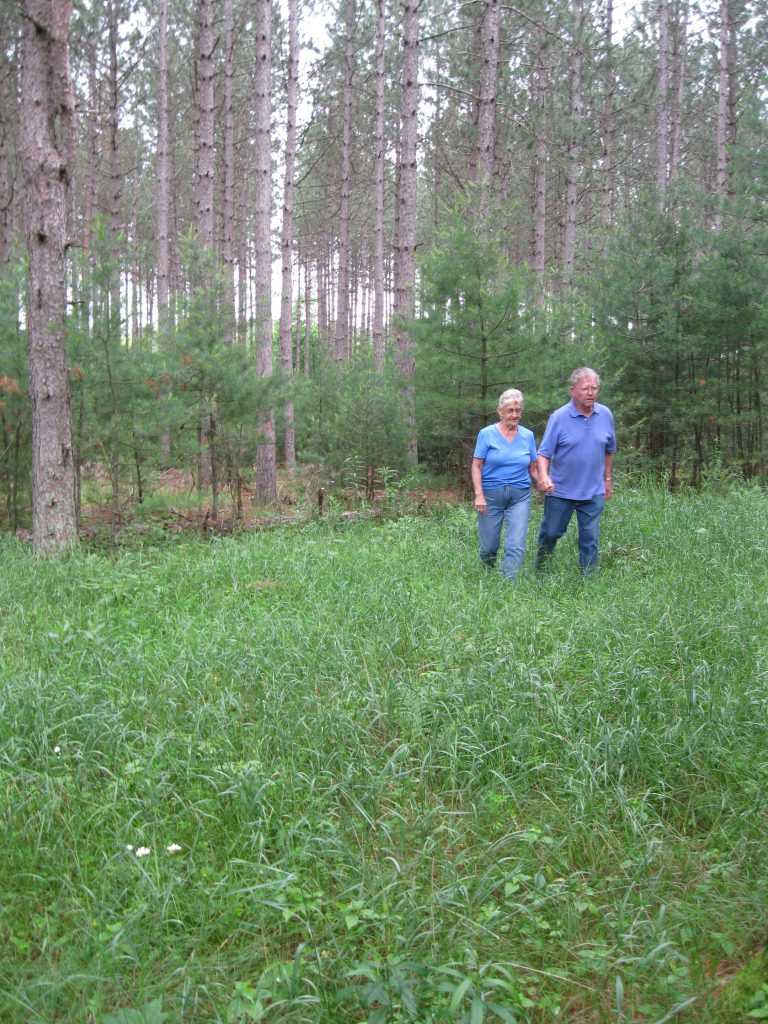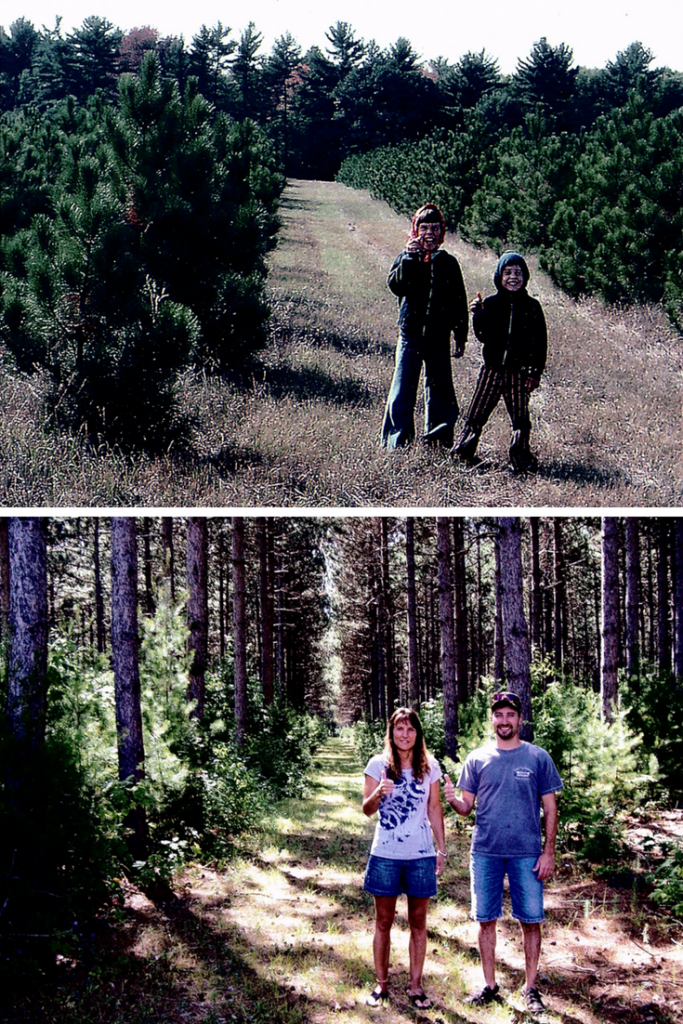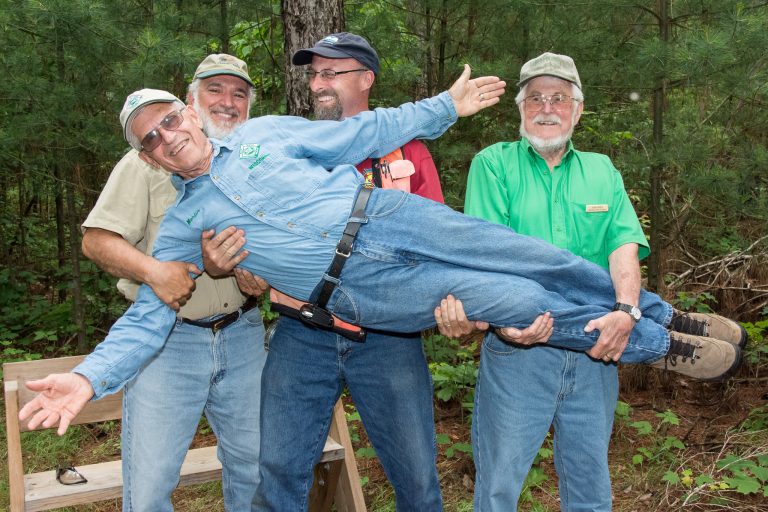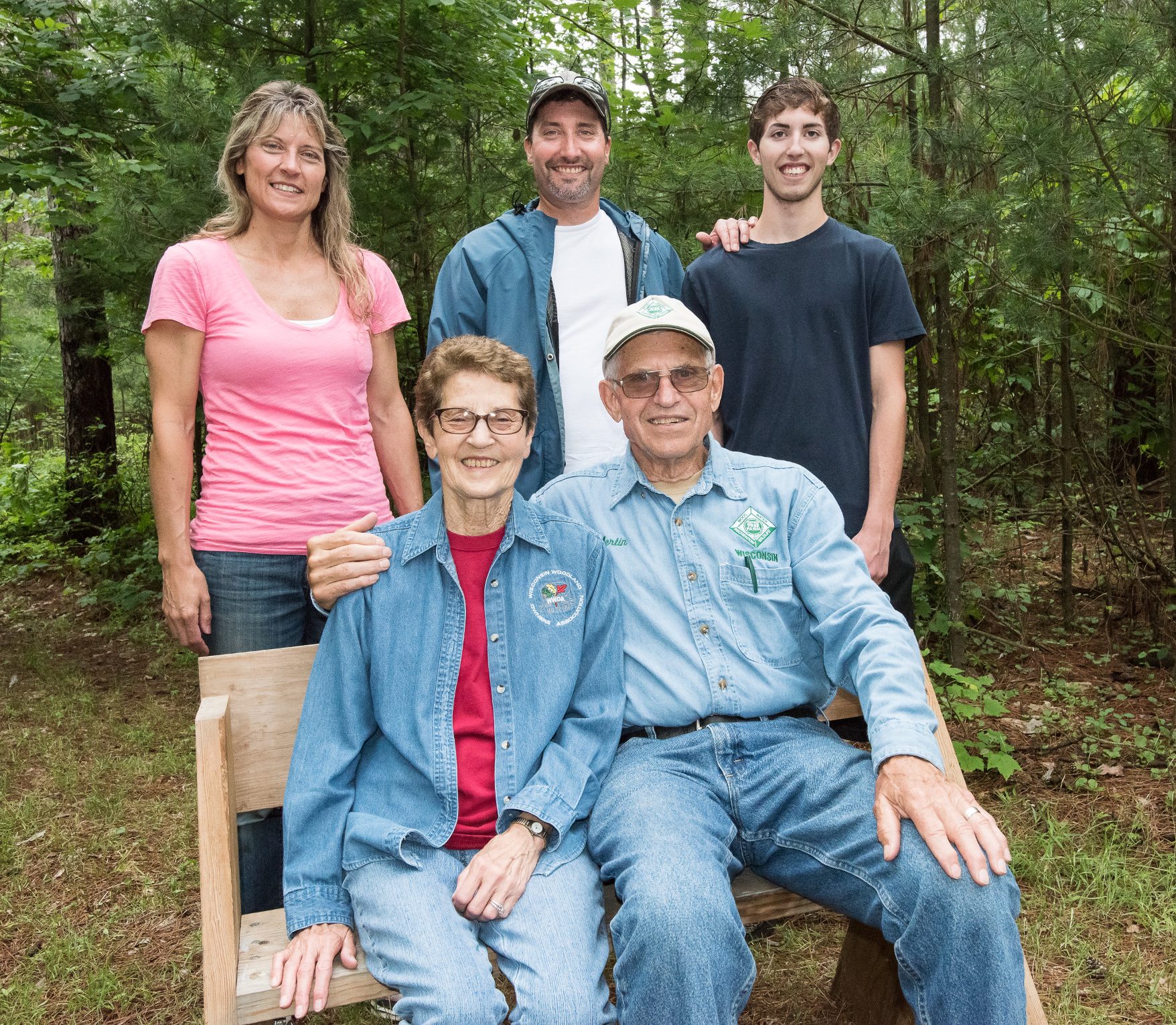Legacy Families
Growing Your Legacy showcases landowners out there just like you- working hard to make sure their land is well taken care of after they are no longer the ones actively managing the land. Click on a title below to learn more about three families taking different steps to care for their land and instill a love of the land in the next generation.
A Legacy Takes Root
The creation of a legacy is often formed long before one has a special piece of woodlands to call their own. For Colin, his love of the outdoors began to take root as a child growing up in a family that owned a seasonal home on the lake. He would play outside with his sister and go for walks with his parents, trying to spend as much time as he could in nature appreciating the beauty of the forest. He knew that one day he wanted to have woods to call his own in the area his family had owned property since the turn of the 20th century.
Fast forward 30 years and Colin was able to make that childhood goal come true with his first purchase of 80-acres. He read in the newspaper that a timber company was selling surplus land. He contacted them about a specific area he had in mind, and still managed to strike up a deal even after he was told that parcel was not on the list. Then twice over the next 5 years opportunity presented itself again and Colin was able to add another 250 adjoining acres to his woodland, including one parcel with a private lake.
Most of the acres Colin had bought were forested, but had been left to grow without any care for some time. Trails were overgrown or had limited access due to blow down. He went to work clearing some himself, but it was a fairly big undertaking for someone that was still working full time. “I realized I was a duck out water when it came to managing forest property. I’m in the real estate business, but that did not qualify me as a forester by any stretch of the imagination.” He then turned to his daughter, Catherine, for suggestions about how to move forward with management of the property since she has a background in natural resources. It was through these suggestions and a little bit of research that he became familiar with all the different resources that were out there to help bring the goals he had for his woods to life.
Just as he had loved spending time in the woods as a child, he strove to instill that same love in his children by bring them to the property to spend weekends and vacations recreating on their woodlands. His efforts were obviously successful, because Catherine and her husband, Brad, elected to move their family from the city to the family woodlands. They decided it was the lifestyle change they were looking for to get their own children outdoors as much as possible so they could really appreciate what nature has to offer.
The kids are curious about nature. They’re not afraid to grab a toad or help pile wood to heat the house. It’s just part of the their everyday routine. Catherine and Brad frequently try new activities with the kids to grow their connection to the land even more. This spring they tapped trees for maple syrup for the first time and have plans in the works to plant a small area with Christmas trees. They hope these will be family traditions for years to come.
As for Colin, with his family living on the property he has even more of an excuse to visit the woodlands. He couldn’t be more excited about their decision to move; he knows the woods are in good hands. While he still owns the woodlands, he’s handed the reigns over to Brad and Catherine when it comes to management, “I don’t dictate, I suggest. Because it’s really ultimately going to end up in their hands, not mine.” The property is his favorite place; he has always been more attached to it than his house in the city. The woodlands are his home and now it’s home for his daughter, son-in-law, and grandchildren.
50 Years in the Making
According to Dick, he always knew he wanted to own a tree farm, “I wanted to plant trees.” He talked to a realtor in the summer of 1966 and found a 40-acre farm that was for sale. The previous year the land had a corn crop on it, but the sandy soil made for a rough yield. Growing up on a dairy farm Dick was told you can judge the productivity of a farm by the height of the silo. The height of this farm’s silo? Only six feet.
That didn’t frighten off Dick and Charlotte from their purchase though. They noticed the sandy soils in the area tended to be good for growing red pine, white pine, and spruces, which were exactly the type of trees that Dick wanted. Another enticing feature: the farm was surrounded by forested county land. They went forward with their idea to plant trees, in part to preserve the soil and surroundings. Dick knew if they lived long enough they would see some income once the trees grew to the timber stage, but that was never the intent. It was simply about his love of trees and having something to pass onto his children and grandchildren.
Once Dick and Charlotte purchased the land, they put all their investments into it. They spent time working the land, planning with their foresters, and learning what they could. After they became more knowledgeable about how to own and care for woodlands, they slowly purchased more land in three additional counties.
When Dick had a health scare in the 1990’s, it really got the couple thinking about the legal side of their legacy. They knew they didn’t want to see their tree farms subdivided. They wanted to make sure the land was there for future generations, because that was part of the plan since day one. With this goal in mind, Dick and Charlotte decided to place their tree farms in an Limited Liability Company (LLC).
Overall, they are very satisfied with the end result of their estate planning. They have conditions in place to ensure that future generations will get to enjoy the land as well. All of the tree farms are part of an estate that cannot be sold or split up, and must be kept as forest land. If any of the properties become too prohibitive to keep as forestland (some of their properties are now surrounded by subdivisions), they can sell those pieces of land, but then must reinvest the earnings in new parcels of forested land. Money made from timber sales is put back into the LLC to use for management of the properties and can be used by the grandchildren, if certain criteria are met, to help fund their post high school education. Setting everything up took a lot of work, but their children were very involved in the process and helped every step of the way.
The other half of estate planning Dick and Charlotte have been working on for the last 50 years, “You have to get the interest of the children involved. You have to do something they they’re going to identify with the land so they’re going to want to preserve the land.” Dick knows their hard work has paid off whenever he sees their grandchildren and they eagerly ask when they are going to the tree farm.
One way of the many ways Dick and Charlotte have established a connection to the land in their children and grandchildren is through their annual Columbus Day tree farm tour. It’s a way for them to mix some fun in with the business side of things. Each year they pick one of the properties to spend the weekend at, slowly rotating through all the tree farms. Members of the LLC will walk the boundary lines and discuss what management activities need to be done next. Dick is currently still the main owner, but takes in everyone’s opinions and whether they agree or disagree about what should happen. While business is being discussed, Charlotte occupies the youngest members of the family with hikes, crafts, and other nature focused activities. Afterwards there is a picnic, bonfires with s’mores, and swimming back at the hotel to entertain everyone.
They’ve seen over the years that for a family to identify with a forest, there has to be a connection. Their original farm is their favorite, not because it is the most productive, but because of the memories there. One popular character in many of these memories: the six-foot silo. Over the years it has served as a fort, a shelter for rainy days, and a provider of warmth for chilly hunting outings among other things. Other memories include creating games to turn laborious activities like tree planting into fun ones and the children digging around in the sandy soil.
To Dick and Charlotte, forest are like family. They’ve put a lot of effort into raising both. “I hope, but I like to use the word know, that for at least two and a half generations, these forest will remain how they are because of how we’ve set up our estate planning.” Through their annual business meetings, the family already has management plans in place for the next 50 years. Their son Steve and granddaughter Elizabeth have taken interest in being the primary land mangers for the next two generations. Dick and Charlotte hope the same love they’ve instill into their children and grandchildren is passed onto the next generations after them, so even when they personally are long gone, the legacy they started will continue to live on.
5 Generations Strong
Merlin can tell you a lot about his family’s woodlands in detail thanks to the intricate records he keeps. Not only can he tell you the amount of timber harvested or trees planted, but he can tell you the precise number of deer and turkey harvested off the property, how much meat they provided, and who shot each animal. Albums full of pictures document various educational field days he and his wife, Georgie, have hosted. These carefully maintained records are reflective of the hard work and love Merlin has poured into his woodlands over the years.
The property was first purchased by Merlin’s grandfather who worked the land as a farmer. It then passed to Merlin’s parents, Ed and Esther. It was his father that first took an interest in making the woodland portion of the property more productive. He started working to convert their single age stand of old trees into a stand with a mixture of ages. Then along with Merlin and other family members, it was decided to plant trees on the property after decades of farming had depleted nutrients from the light soil. These were just some of the first steps in making their woodland into what it is today.
Through the years Merlin and Georgie have taken advantage of many programs and professionals to help with the management of their woodlands. A big part of that assistance has come from his foresters. He first became acquainted with each of his foresters through their positions in the Wisconsin Department of Natural Resources (WDNR). As they retired, it only made sense to Merlin to hire them as private consulting foresters since he had developed such a deep relationship with them and they knew his family’s land so well. After all, Hugh, Merlin’s first WDNR forester has been assisting with managing the land since Ed was the primary owner. Merlin is currently working with his third WDNR forester.
Since their children were young, Merlin and Georgie have been bringing them to the woods. They would help with projects on the land, like with the thousands of trees that have been planted on the property. However, his son, Scott, has taken a deeper interest and extra involvement over the last few years. He has ideas for what he would like to see in the woods and Merlin lets him test those ideas out. They’ve tried planting different species, like black spruce and tamarack, to see how they would survive and Scott put in their first deer food plot for hunting. Merlin is glad to see him become active in the management of the land, it means the land is in good hands for a another generation. Scott’s son, Cody, is also learning what it takes to manage the woods. A few years back he joined the family hunting group when he became old enough and helps dad with future projects. Cody will be the 5th generation to own the family woodlands.
The legacy that Merlin has created extends beyond that of his immediate family. The Four B’s is the hunting group that uses the woodlands to hunt each year. From nephews to in-laws, a good chunk of the Four-B’s are relation. The group is also key in the management of the land. As a way to show appreciation for the hunting privileges they receive, the group often assists with projects, from tree plantings to selective cuttings. They help with improvement of wildlife habitat and then seen the benefits during hunting season.
Merlin has been enjoy his family’s land from a young age, “I remember when I was six years old and my grandmother took me for a walk by an oak tree, which isn’t far from here – it’s still standing, and we picked up acorns. My mother wasn’t impressed when I brought them home, but I was!” Decades later he still derives the same enjoyment. He loves to go for walks and observe the wildlife, from squirrels and turkeys to checking in on an eagle that has a nest in the corner of the property. The rest of the family echos the same sentiments. There’s something relaxing and peaceful about being out in nature and they’re glad future family members will get to enjoy it, too.
